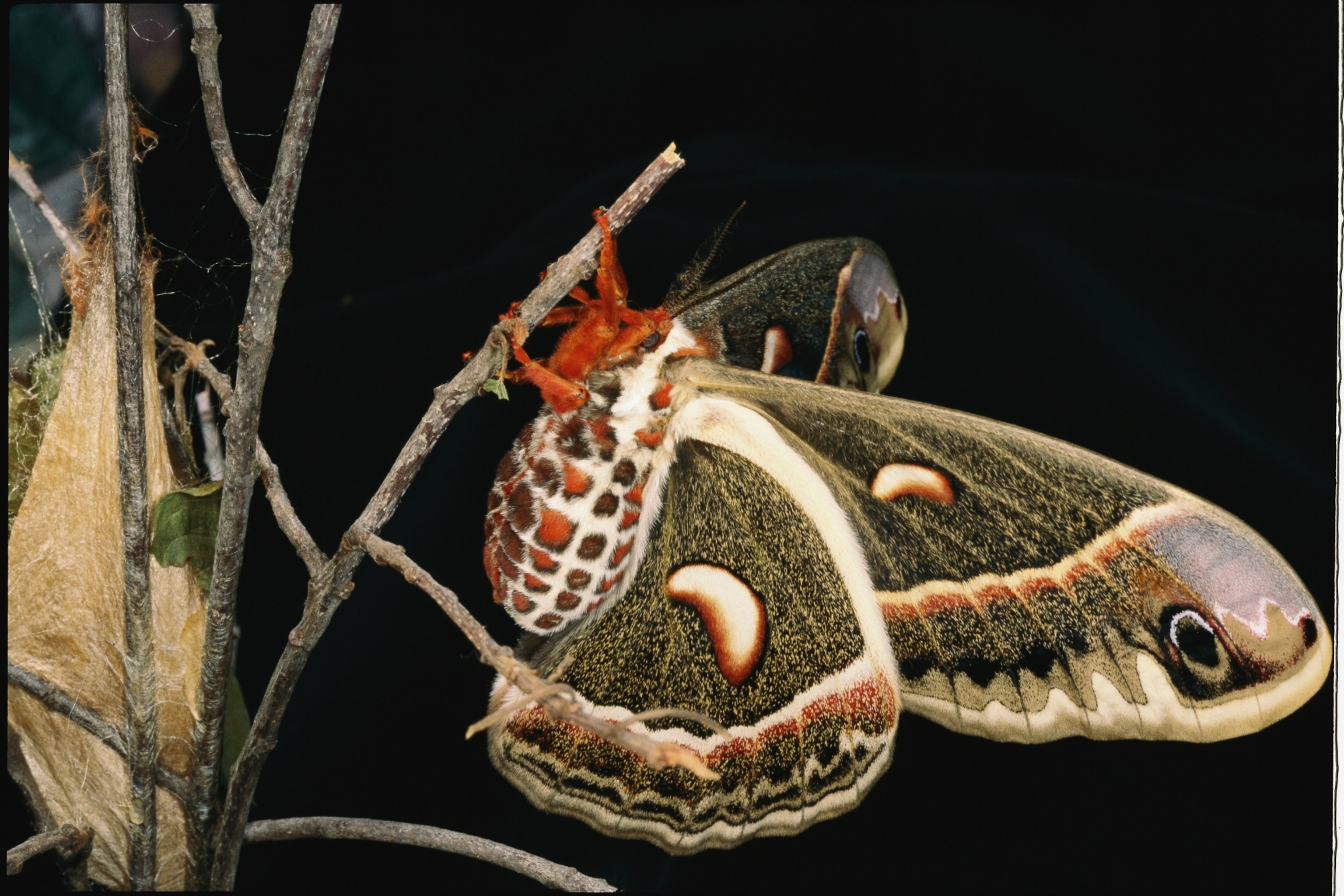














Why insects like moths are so attracted to bright lights
Like a moth to a flame, er, lamp, insects are drawn to bright lights because they confuse the animals' navigational systems.
It’s a familiar sight, especially in the summertime: moths and other insects gathered around lights like lamps. Often, creatures entranced in such a glow get eaten by predators or overheat.
While common, it’s not immediately obvious: How could insects be so thoroughly tricked, lured to their death by light on such a grand scale?
Like the tragic tale of Romeo and Juliet, the story of the lamp and moth is one of fatal attraction. Being primarily nocturnal creatures, moths evolved to travel by the glimmer of the moon, by a method called transverse orientation.
“[Transverse orientation] is sort of like us keeping the north star in a certain position so we know where we are,” says Jeff Smith, curator of the moth collection at the Bohart Museum of Entomology. In the same way, it’s thought the moths keep the light source at a certain position in relation to their body to guide them, Smith explains.
Enter lamp, stage left
What moth evolution couldn’t account for was the proliferation of 24/7 electric light in our modern world.
Indeed, the day that Thomas Edison patented the lightbulb—January 27, 1880, which paved the way for global distribution of electric illumination—was a dark day in moth history.
“It’s all gone awry because we’ve provided so many artificial moons,” says Lynn Kimsey, professor of entomology at UC Davis.
Elements within moth eyes are tuned to faint light, and act “like miniature telescopes.” Thus when they’re faced with powerful artificial illumination, it can act as a “super-stimulant,” Kimsey says. (Related: These moths drink the tears of sleeping birds)
“When you’ve got really bright lights it’s almost irresistible.
Star-crossed lovers
But what happens when a moth reaches what it thought was the moon? It’s a jarring reality check.
“I knew a guy who owned a Jaguar dealership that had a big mercury-vapor light,” Smith recounts. “Every night they’d fire on the lights and big beetles would come flying to the mercury-vapor lights, [and] land on the ground. In the morning, seagulls were picking them up, hopping on the jaguars… and pooping on the cars.”
The dealership switched to sodium-vapor bulbs because the wave-length of light they emit is much less attractive to the bugs.
Though there is still research to be done to fully understand moth behavior, scientists do know that lamps have thrown a wrench into the moth’s evolutionary programming.
“[Moths] aren’t the brightest things on this earth,” Kimsey says. “Excuse the pun, but they’re not the brightest bulbs in the pack.”
“You’d think the goal for the night would be to find food or find a mate,” muses Smith. “But I’ve had a moth out on my porch for three days, just sitting next to the light the whole time… If a praying mantis doesn’t eat it, or a frog doesn’t eat it, it might just sit there wasting much of its life.”
You May Also Like
Go Further
Animals
- Octopuses have a lot of secrets. Can you guess 8 of them?
- Animals
- Feature
Octopuses have a lot of secrets. Can you guess 8 of them? - This biologist and her rescue dog help protect bears in the AndesThis biologist and her rescue dog help protect bears in the Andes
- An octopus invited this writer into her tank—and her secret worldAn octopus invited this writer into her tank—and her secret world
- Peace-loving bonobos are more aggressive than we thoughtPeace-loving bonobos are more aggressive than we thought
Environment
- Listen to 30 years of climate change transformed into haunting musicListen to 30 years of climate change transformed into haunting music
- This ancient society tried to stop El Niño—with child sacrificeThis ancient society tried to stop El Niño—with child sacrifice
- U.S. plans to clean its drinking water. What does that mean?U.S. plans to clean its drinking water. What does that mean?
- Food systems: supporting the triangle of food security, Video Story
- Paid Content
Food systems: supporting the triangle of food security - Will we ever solve the mystery of the Mima mounds?Will we ever solve the mystery of the Mima mounds?
History & Culture
- Strange clues in a Maya temple reveal a fiery political dramaStrange clues in a Maya temple reveal a fiery political drama
- How technology is revealing secrets in these ancient scrollsHow technology is revealing secrets in these ancient scrolls
- Pilgrimages aren’t just spiritual anymore. They’re a workout.Pilgrimages aren’t just spiritual anymore. They’re a workout.
- This ancient society tried to stop El Niño—with child sacrificeThis ancient society tried to stop El Niño—with child sacrifice
- This ancient cure was just revived in a lab. Does it work?This ancient cure was just revived in a lab. Does it work?
Science
- The unexpected health benefits of Ozempic and MounjaroThe unexpected health benefits of Ozempic and Mounjaro
- Do you have an inner monologue? Here’s what it reveals about you.Do you have an inner monologue? Here’s what it reveals about you.
- Jupiter’s volcanic moon Io has been erupting for billions of yearsJupiter’s volcanic moon Io has been erupting for billions of years
- This 80-foot-long sea monster was the killer whale of its timeThis 80-foot-long sea monster was the killer whale of its time
Travel
- How to plan an epic summer trip to a national parkHow to plan an epic summer trip to a national park
- This town is the Alps' first European Capital of CultureThis town is the Alps' first European Capital of Culture
- This royal city lies in the shadow of Kuala LumpurThis royal city lies in the shadow of Kuala Lumpur
- This author tells the story of crypto-trading Mongolian nomadsThis author tells the story of crypto-trading Mongolian nomads




